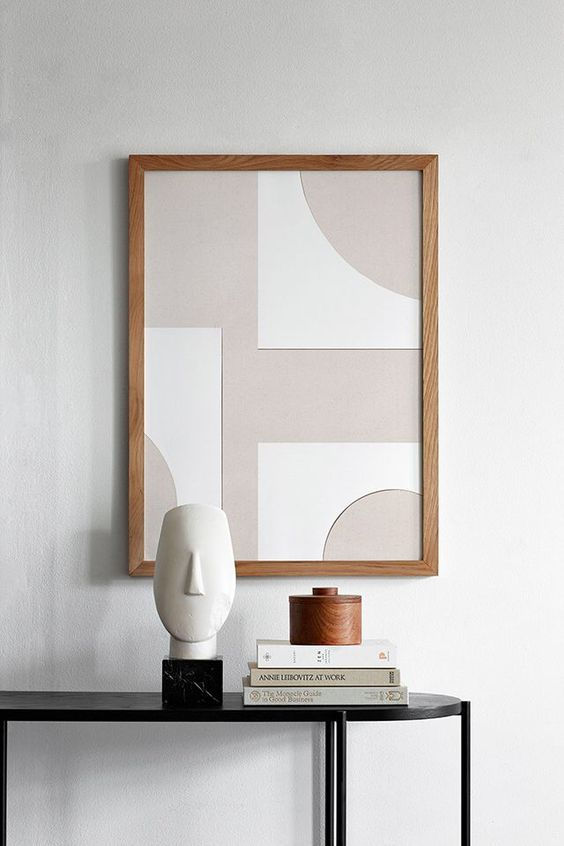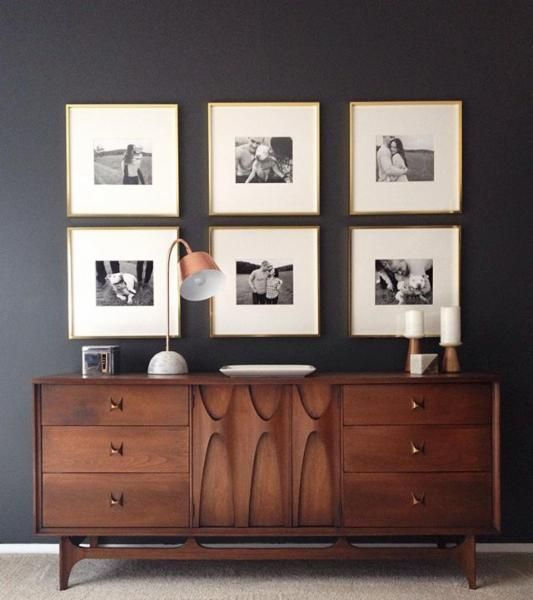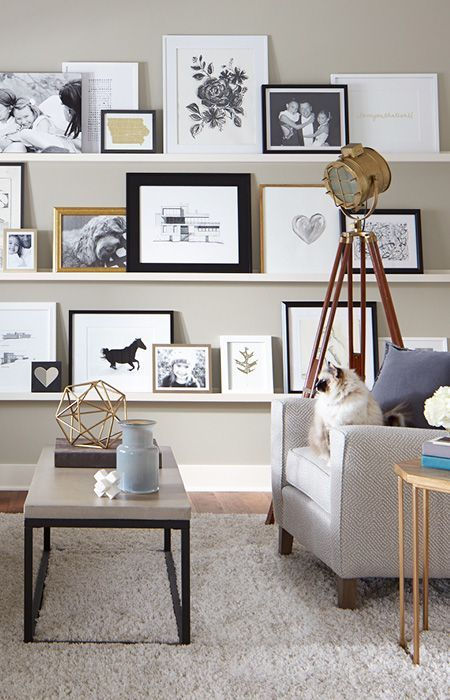Wall Art 101
- Jessie Patton
- Sep 7, 2018
- 3 min read

Welcome to our design blog!
Today, you will learn how to properly hang your wall art.
From showing off personal photography to abstract artwork, wall art is a critical decor element that can bring any room together. There is, however, a lot more to it than just hanging things on a wall. Here are just a few basic guidelines everyone should follow when hanging pieces on a wall in order to achieve a cohesive, well-designed look.
#1: Hang your pieces at the right height.
Many people are guilty of hanging their artwork too high! Hanging artwork too high throws off the proportions of the room as well as the relationship between the furniture and artwork. The key is to hang your pieces so that the center of the item or group of items is at eye level (57"-60" above the floor). Another way to think about it is to imagine that the wall is split into 4 pieces, hang artwork in the 3rd piece up from the floor. If the artwork is above a sofa, bookcase, or other piece of large furniture, hang the artwork 6"-8" above the furniture. Both of these tips ensure that the artwork appears unified with other elements in the space.
Photo: If this is yours, please send us a note so we can give you credit!
#2: On an open wall with little to no furniture against it, go for a gallery wall.

Gallery walls can be a simple or as complicated as you make them. You can do a simple grid pattern with every piece having the same frame size and finish, or you can combine different sized artwork, sculptural hangings, or throw an interesting clock into the mix. No matter which style of gallery wall you choose, laying out the wall ahead of time is key.
Photo: If this is yours, please send us a note so we can give you credit!
#3: Try laying out an arrangement on the floor before hanging it on the wall.
If you are trying to achieve a gallery wall or group a few different pieces together, lay it out first. Laying your pieces out on the floor or on a bed gives you the chance to easily explore different layouts before committing to fixing them to the wall. It also gives you the chance to work out details like the distance between each piece. You could also test out the grouping on the wall with paper and tape. Always treat these types of groupings as if they were one piece so that they look intentional.
Photo: deavita.com
#4: Keep scale and proportion in mind.
When deciding which pieces of artwork to hang on the wall, it is important to think about the size of the artwork and how it will affect the furniture and other pieces around it. For example, hanging a large piece of artwork above a sofa in a room with lower ceilings would not look right. The artwork and sofa automatically cause that wall to appear very heavy, dominating the room in a negative way. The large piece of artwork should be hung on the opposite wall of the sofa in order to balance the room. Whether too big or too small, scale and proportion are very important in achieving a balanced room.
Photo: cityfarmhouse.com
#5: Ledges are a unique way to show off your artwork.
Ledges or very shallow shelves can be used to rest artwork against. They allow you to create the same look as a gallery wall, while also allowing you to swap out and rearrange pieces easily. It also creates an modern but casual look with an eclectic flair. Many people also apply the ledge idea to a fireplace mantel. Placing some taller framed pieces behind vases or sculptures creates a classy and stylish vignette.
Photo: lowes.com
These tips may, however, not perfectly apply in every situation. It is important to always take a step back and think about how the artwork relates to the room as a whole.
Do you have any other tips? Leave a comment below!














Comments